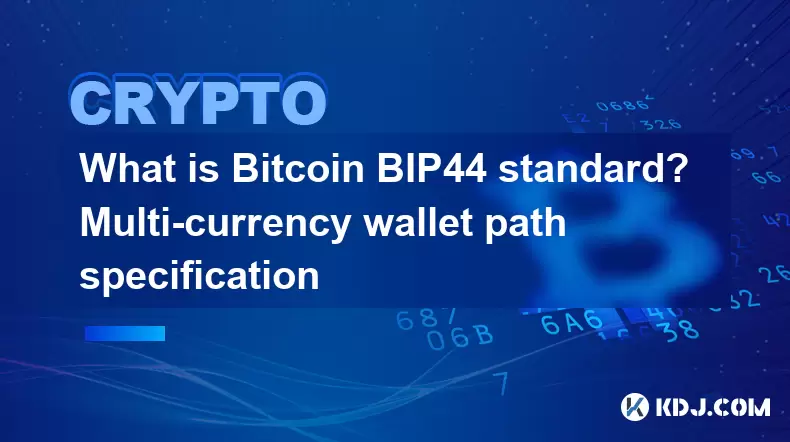-
 Bitcoin
Bitcoin $105,953.9980
3.06% -
 Ethereum
Ethereum $2,445.3292
6.68% -
 Tether USDt
Tether USDt $1.0006
-0.03% -
 XRP
XRP $2.1968
7.03% -
 BNB
BNB $643.2903
2.13% -
 Solana
Solana $144.2799
3.82% -
 USDC
USDC $1.0000
-0.03% -
 TRON
TRON $0.2739
0.49% -
 Dogecoin
Dogecoin $0.1642
4.47% -
 Cardano
Cardano $0.5834
5.49% -
 Hyperliquid
Hyperliquid $38.0741
2.80% -
 Sui
Sui $2.7741
7.56% -
 Chainlink
Chainlink $13.4107
11.26% -
 Bitcoin Cash
Bitcoin Cash $450.4828
-0.61% -
 UNUS SED LEO
UNUS SED LEO $9.1301
0.64% -
 Stellar
Stellar $0.2476
5.49% -
 Avalanche
Avalanche $18.0637
5.09% -
 Toncoin
Toncoin $2.9066
2.43% -
 Shiba Inu
Shiba Inu $0.0...01160
4.01% -
 Hedera
Hedera $0.1527
8.00% -
 Litecoin
Litecoin $84.6122
2.37% -
 Monero
Monero $317.6076
5.76% -
 Ethena USDe
Ethena USDe $1.0008
0.02% -
 Polkadot
Polkadot $3.4519
5.27% -
 Dai
Dai $1.0000
-0.03% -
 Bitget Token
Bitget Token $4.2835
5.62% -
 Uniswap
Uniswap $7.0443
9.78% -
 Pepe
Pepe $0.0...09964
7.41% -
 Pi
Pi $0.5391
4.64% -
 Aave
Aave $264.1743
11.26%
How to do Bitcoin leverage trading, is the risk high
Bitcoin leverage trading amplifies potential returns but also increases risk; use stop-loss orders and start with lower leverage to manage these risks effectively.
May 10, 2025 at 05:43 am

How to do Bitcoin Leverage Trading, Is the Risk High
Bitcoin leverage trading has become a popular method for traders looking to amplify their potential returns in the cryptocurrency market. However, it's crucial to understand the mechanics of leverage trading and the associated risks before diving in. This article will guide you through the process of Bitcoin leverage trading and discuss the inherent risks involved.
Understanding Bitcoin Leverage Trading
Leverage trading in the context of Bitcoin involves borrowing funds to increase the size of a trading position. This means that traders can control a larger amount of Bitcoin with a smaller initial investment. For example, with a 10x leverage, a trader can control a position worth 10 times their initial capital.
The primary allure of leverage trading is the potential for higher profits. If the market moves in the trader's favor, the returns can be significantly amplified. However, the flip side is that losses can also be magnified, making it a high-risk strategy.
Choosing a Leverage Trading Platform
To engage in Bitcoin leverage trading, you'll need to select a reliable trading platform that offers leverage options. Some popular platforms include Binance, BitMEX, and Bybit. Each platform has its own set of features, fees, and leverage limits, so it's important to do your research and choose one that aligns with your trading goals.
When selecting a platform, consider factors such as the maximum leverage offered, the user interface, the fees associated with trading, and the platform's reputation for security and reliability. Once you've chosen a platform, you'll need to create an account and complete the necessary verification processes.
Setting Up a Leverage Trading Account
Setting up a leverage trading account involves several steps:
- Register on the chosen platform: Provide your personal information and complete the registration process.
- Complete KYC (Know Your Customer) verification: This typically involves submitting identification documents to comply with regulatory requirements.
- Deposit funds: Transfer Bitcoin or other supported cryptocurrencies into your trading account. Some platforms may also accept fiat currency deposits.
- Enable leverage trading: Navigate to the platform's settings or trading section to enable leverage trading on your account.
Once your account is set up and funded, you can begin exploring the leverage trading options available on the platform.
Executing a Leverage Trade
To execute a leverage trade, follow these steps:
- Select the trading pair: Choose the Bitcoin trading pair you want to trade, such as BTC/USD or BTC/USDT.
- Choose the leverage level: Decide on the amount of leverage you want to use. Common leverage options range from 2x to 100x, depending on the platform.
- Set your position size: Determine the size of your trade based on your risk tolerance and the amount of capital you're willing to risk.
- Place the trade: Enter your trade order, specifying whether you want to go long (buy) or short (sell) on Bitcoin.
- Monitor and manage your position: Keep an eye on the market and be prepared to adjust your position or close it if necessary.
Managing Risk in Leverage Trading
Risk management is crucial when engaging in Bitcoin leverage trading. Here are some strategies to help mitigate the risks:
- Use stop-loss orders: A stop-loss order automatically closes your position if the market moves against you, limiting potential losses.
- Diversify your portfolio: Don't put all your capital into a single leverage trade. Spread your risk across different assets and trading strategies.
- Start with lower leverage: If you're new to leverage trading, start with lower leverage levels to gain experience and minimize risk.
- Stay informed: Keep up with market news and trends to make informed trading decisions.
Understanding the Risks of Leverage Trading
While leverage trading can offer the potential for higher returns, it also comes with significant risks. Here are some key risks to be aware of:
- Liquidation risk: If the market moves against your position and your losses exceed your margin, your position may be liquidated, resulting in a total loss of your initial investment.
- Volatility risk: The cryptocurrency market is known for its high volatility, which can lead to rapid price swings and increased risk of losses.
- Interest and fees: Leverage trading often involves borrowing costs and trading fees, which can eat into your profits or increase your losses.
- Psychological stress: The high stakes of leverage trading can lead to emotional decision-making, which can exacerbate losses.
Conclusion
Bitcoin leverage trading can be a powerful tool for experienced traders looking to amplify their potential returns. However, it's essential to approach it with caution and a solid understanding of the risks involved. By choosing a reliable platform, setting up your account correctly, executing trades carefully, and managing risk effectively, you can navigate the world of Bitcoin leverage trading more confidently.
Frequently Asked Questions
Q: Can I start leverage trading with a small amount of capital?
A: Yes, many platforms allow you to start leverage trading with a relatively small amount of capital. However, it's important to understand that even small positions can result in significant losses if the market moves against you.
Q: How do I calculate the potential profit and loss of a leverage trade?
A: To calculate potential profit and loss, you need to consider the leverage level, the size of your position, and the price movement of Bitcoin. For example, if you use 10x leverage and the price of Bitcoin moves 1% in your favor, your profit would be 10%. Conversely, a 1% move against you would result in a 10% loss.
Q: Are there any regulatory restrictions on Bitcoin leverage trading?
A: Regulatory restrictions on Bitcoin leverage trading vary by country. Some countries have strict regulations or outright bans on leverage trading, while others have more lenient rules. It's important to check the regulations in your jurisdiction before engaging in leverage trading.
Q: Can I use leverage trading to hedge my existing Bitcoin holdings?
A: Yes, leverage trading can be used as a hedging strategy to protect your existing Bitcoin holdings from price fluctuations. By taking a short position on Bitcoin, you can offset potential losses in your long-term holdings if the price drops.
Disclaimer:info@kdj.com
The information provided is not trading advice. kdj.com does not assume any responsibility for any investments made based on the information provided in this article. Cryptocurrencies are highly volatile and it is highly recommended that you invest with caution after thorough research!
If you believe that the content used on this website infringes your copyright, please contact us immediately (info@kdj.com) and we will delete it promptly.
- Crypto Liquidations Plummet: Time to Buy Today?
- 2025-06-25 08:25:12
- XRP Price Targets: Will XRP Hit $8?
- 2025-06-25 08:45:12
- Pi Pico W, One-Time Passwords, and Tokens: A Secure Combination
- 2025-06-25 08:25:12
- Crypto Altcoins in June 2025: Riding the Wave with Qubetics and Beyond
- 2025-06-25 08:45:12
- Altcoins, ROI, and Top Performers: Navigating the Crypto Landscape
- 2025-06-25 09:05:13
- Navigating the Crypto Seas: Bitcoin, Ethereum, DeFi, and Altcoins in a Volatile Market
- 2025-06-25 08:51:51
Related knowledge

Which Bitcoin hardware wallet is better? Comparison of mainstream hardware devices
Jun 16,2025 at 02:08am
What Is a Bitcoin Hardware Wallet?A Bitcoin hardware wallet is a physical device designed to securely store the private keys associated with your cryptocurrency holdings. Unlike software wallets, which are more vulnerable to online threats, hardware wallets keep private keys offline, significantly reducing the risk of unauthorized access. These devices ...

What are Bitcoin non-custodial wallets? Self-controlled private key recommendation
Jun 16,2025 at 11:29pm
Understanding Bitcoin Non-Custodial WalletsA Bitcoin non-custodial wallet is a type of digital wallet where users retain full control over their private keys. Unlike custodial wallets, which are managed by third-party services such as exchanges, non-custodial wallets ensure that only the user can access and manage their funds. This means no intermediary...

What is Bitcoin BIP44 standard? Multi-currency wallet path specification
Jun 15,2025 at 04:08pm
Understanding the BIP44 Standard in Bitcoin and CryptocurrencyThe BIP44 standard, which stands for Bitcoin Improvement Proposal 44, is a widely adopted hierarchical deterministic wallet structure used across various cryptocurrencies. It defines a structured path format that enables wallets to support multiple currencies while maintaining consistency and...

What is Bitcoin HD wallet? Advantages of layered deterministic wallets
Jun 16,2025 at 03:56pm
Understanding Bitcoin HD WalletsA Bitcoin HD wallet, or Hierarchical Deterministic wallet, is a type of cryptocurrency wallet that generates multiple keys and addresses from a single seed phrase. Unlike traditional wallets that create random private keys for each transaction, an HD wallet follows a structured hierarchy to derive keys in a deterministic ...

Is Bitcoin zero-confirmation transaction risky? Zero-confirmation usage scenarios
Jun 15,2025 at 03:57am
Understanding Zero-Confirmation Transactions in BitcoinBitcoin zero-confirmation transactions, often referred to as 'unconfirmed transactions,' are those that have been broadcast to the network but have not yet been included in a block. This means they have not received any confirmations from miners. While these transactions can be useful in certain con...

What is Bitcoin P2SH address? Difference between P2SH and P2PKH
Jun 16,2025 at 09:49pm
Understanding Bitcoin P2SH AddressesA Pay-to-Script-Hash (P2SH) address in the Bitcoin network is a type of address that allows users to send funds to a script hash rather than directly to a public key hash, as seen in earlier address formats. This innovation was introduced through BIP 16, enhancing flexibility and enabling more complex transaction type...

Which Bitcoin hardware wallet is better? Comparison of mainstream hardware devices
Jun 16,2025 at 02:08am
What Is a Bitcoin Hardware Wallet?A Bitcoin hardware wallet is a physical device designed to securely store the private keys associated with your cryptocurrency holdings. Unlike software wallets, which are more vulnerable to online threats, hardware wallets keep private keys offline, significantly reducing the risk of unauthorized access. These devices ...

What are Bitcoin non-custodial wallets? Self-controlled private key recommendation
Jun 16,2025 at 11:29pm
Understanding Bitcoin Non-Custodial WalletsA Bitcoin non-custodial wallet is a type of digital wallet where users retain full control over their private keys. Unlike custodial wallets, which are managed by third-party services such as exchanges, non-custodial wallets ensure that only the user can access and manage their funds. This means no intermediary...

What is Bitcoin BIP44 standard? Multi-currency wallet path specification
Jun 15,2025 at 04:08pm
Understanding the BIP44 Standard in Bitcoin and CryptocurrencyThe BIP44 standard, which stands for Bitcoin Improvement Proposal 44, is a widely adopted hierarchical deterministic wallet structure used across various cryptocurrencies. It defines a structured path format that enables wallets to support multiple currencies while maintaining consistency and...

What is Bitcoin HD wallet? Advantages of layered deterministic wallets
Jun 16,2025 at 03:56pm
Understanding Bitcoin HD WalletsA Bitcoin HD wallet, or Hierarchical Deterministic wallet, is a type of cryptocurrency wallet that generates multiple keys and addresses from a single seed phrase. Unlike traditional wallets that create random private keys for each transaction, an HD wallet follows a structured hierarchy to derive keys in a deterministic ...

Is Bitcoin zero-confirmation transaction risky? Zero-confirmation usage scenarios
Jun 15,2025 at 03:57am
Understanding Zero-Confirmation Transactions in BitcoinBitcoin zero-confirmation transactions, often referred to as 'unconfirmed transactions,' are those that have been broadcast to the network but have not yet been included in a block. This means they have not received any confirmations from miners. While these transactions can be useful in certain con...

What is Bitcoin P2SH address? Difference between P2SH and P2PKH
Jun 16,2025 at 09:49pm
Understanding Bitcoin P2SH AddressesA Pay-to-Script-Hash (P2SH) address in the Bitcoin network is a type of address that allows users to send funds to a script hash rather than directly to a public key hash, as seen in earlier address formats. This innovation was introduced through BIP 16, enhancing flexibility and enabling more complex transaction type...
See all articles
























































































